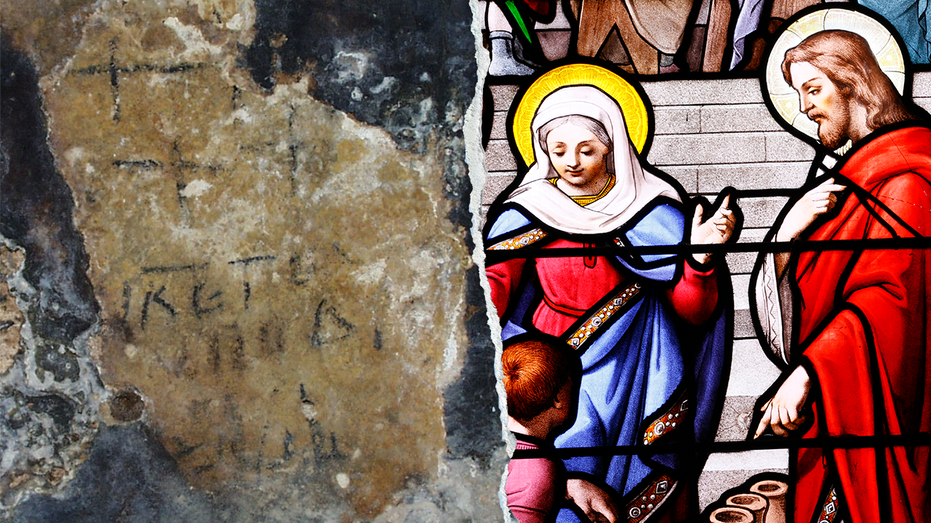Archaeologist uncovers 'compelling evidence' of true location where Jesus turned water into wine

A historian believes he's found the location of Jesus Christ's first miracle – and has newfound evidence to back it up.
Scripture gives limited details about Jesus' first miracle, which is said to have taken place at Cana. The Gospel of John states that Jesus turned water into wine during a wedding in the village.
"Nearby stood six stone water jars, the kind used by the Jews for ceremonial washing, each holding from twenty to thirty gallons," the gospel states. "Jesus said to the servants, 'Fill the jars with water,' so they filled them to the brim."
The passage continues, "Then he told them, 'Now draw some out and take it to the master of the banquet.' They did so, and the master of the banquet tasted the water that had been turned into wine."
The prevailing theory states that Kafr Kanna, an Israeli town in the Galilee, was the true location of Cana. Pilgrims have long venerated the site, according to the Catholic Encyclopedia of 1914.
But historian Tom McCollough says that Cana was actually located five miles north of Kafr Kanna.
The site, called Khirbet Qana, was a Jewish village from 323 B.C. to 324 A.D.
McCollough taught religion and history at Centre College until his retirement in 2017. He told Pen News that Khirbet Qana presents the most compelling evidence so far.
ARCHAEOLOGISTS REVEAL STRANGE INSCRIPTIONS IN ROOM OF THE LAST SUPPER IN JERUSALEM
"[No other village] has the ensemble of evidence that makes such a persuasive case for Khirbet Qana," he said.
The main piece of evidence is a series of tunnels used by Christians — marked with various crosses and references to Christ, which date back over 1,500 years.
"We have uncovered a large Christian veneration cave complex that was used by Christian pilgrims who came to venerate the water-to-wine miracle," McCollough said.
"This complex was used beginning in the late fifth or early sixth century and continued to be used by pilgrims into the 12th-century Crusader period."
During his excavation, McCollough also uncovered an altar and a shelf with a stone vessel.
He noted that there was space for five additional jars — consistent with the biblical account of six stone jars.
On the walls of the complex, his team of excavators also uncovered references to Kyrie Iesou, a Koine Greek phrase meaning Lord Jesus.
"The pilgrim texts we have from this period that describe what pilgrims did and saw when they came to Cana of Galilee match very closely what we have exposed as the veneration complex," he said.
Speaking to Pen News, McCollough also used the work of Flavius Josephus, a first-century Jewish historian, to back up his argument.
"His references to Cana align geographically with the location of Khirbet Qana and align logically with his movements," he said.
ANCIENT CHRISTIAN FIGURINES DISCOVERED IN 1,500-YEAR-OLD DESERT GRAVE
"The reference to Cana in Josephus, the New Testament and in the rabbinic texts would argue the village was a Jewish village, near the Sea of Galilee and in the region of lower Galilee."
He added, "Khirbet Qana fulfills all of these criteria."
For more Lifestyle articles, visit foxnews.com/lifestyle
McCollough also argued that Kafr Kanna wasn't recognized as a pilgrimage site for Cana until the 18th century, which disputes the Catholic narrative about the site.
"At this point, the Franciscans were managing Christian pilgrimage and facilitating easy passage rather than historical accuracy," he claimed.
All in all, McCollough believes his excavations could bolster the case for the historicity of the Bible, and that his findings "warrant at least a reconsideration of the historical value of John’s references to Cana and Jesus."
CLICK HERE TO SIGN UP FOR OUR LIFESTYLE NEWSLETTER
"Our excavations have shown that this was in fact a thriving Jewish village located in the heart of much of Jesus’ life and ministry," he said.
McCollough added, "For the Gospel of John, Cana [was] in some ways Jesus’ safe place or operational center. It is a place he and his disciples return to when they encounter resistance in Judea."
The most recent research comes as archaeologists across the world work on uncovering sites from the Bible.
In March, an archaeologist working at Jerusalem's Church of the Holy Sepulchre spoke with Fox News Digital about finding proof of an ancient garden at the site, consistent with scripture.
Earlier this year, a group of Israeli archaeologists uncovered evidence of a biblical battle at the city of Megiddo in northern Israel.
What's Your Reaction?
 Like
0
Like
0
 Dislike
0
Dislike
0
 Love
0
Love
0
 Funny
0
Funny
0
 Angry
0
Angry
0
 Sad
0
Sad
0
 Wow
0
Wow
0























